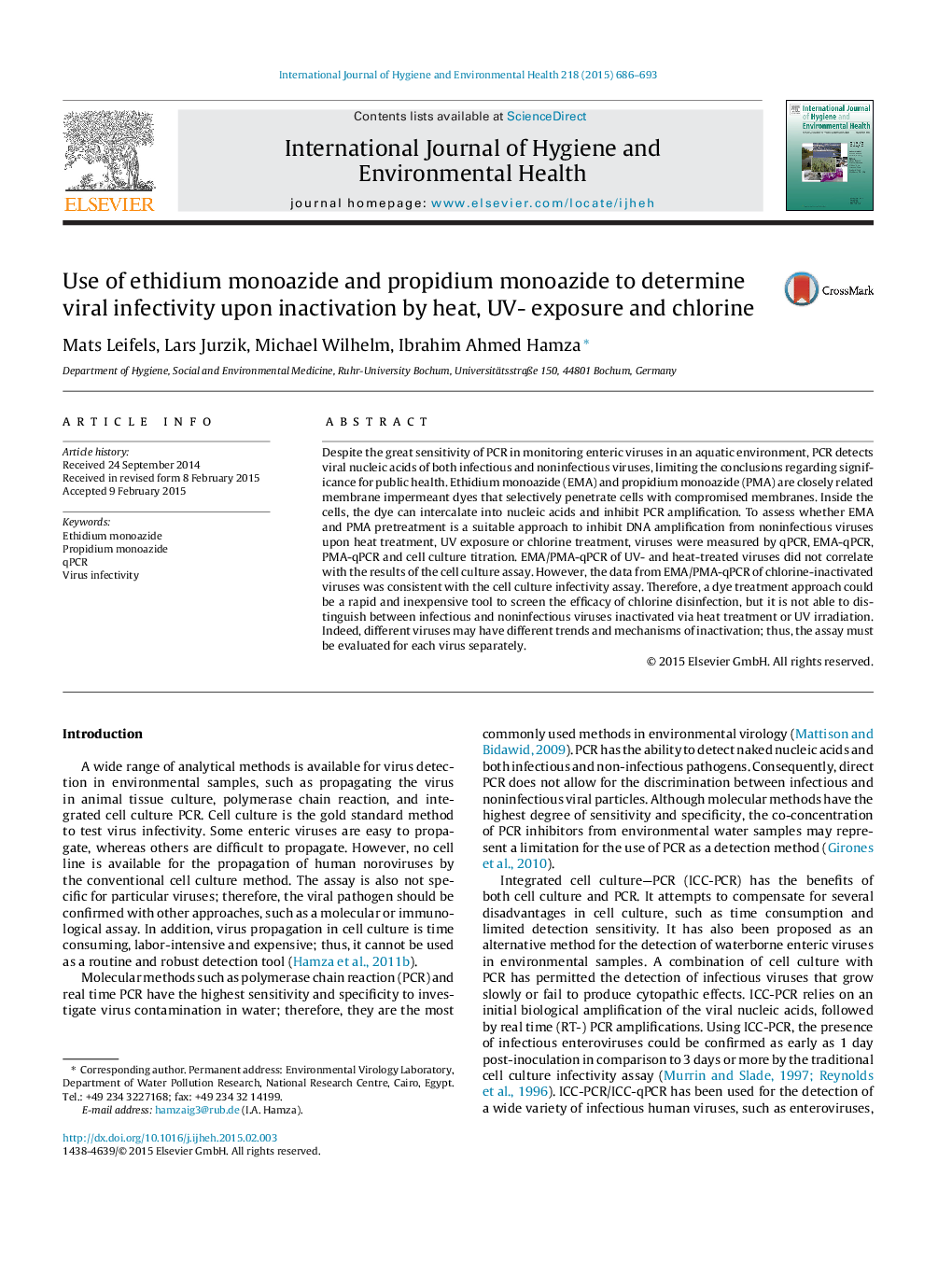| کد مقاله | کد نشریه | سال انتشار | مقاله انگلیسی | نسخه تمام متن |
|---|---|---|---|---|
| 5854570 | 1561886 | 2015 | 8 صفحه PDF | دانلود رایگان |
Despite the great sensitivity of PCR in monitoring enteric viruses in an aquatic environment, PCR detects viral nucleic acids of both infectious and noninfectious viruses, limiting the conclusions regarding significance for public health. Ethidium monoazide (EMA) and propidium monoazide (PMA) are closely related membrane impermeant dyes that selectively penetrate cells with compromised membranes. Inside the cells, the dye can intercalate into nucleic acids and inhibit PCR amplification. To assess whether EMA and PMA pretreatment is a suitable approach to inhibit DNA amplification from noninfectious viruses upon heat treatment, UV exposure or chlorine treatment, viruses were measured by qPCR, EMA-qPCR, PMA-qPCR and cell culture titration. EMA/PMA-qPCR of UV- and heat-treated viruses did not correlate with the results of the cell culture assay. However, the data from EMA/PMA-qPCR of chlorine-inactivated viruses was consistent with the cell culture infectivity assay. Therefore, a dye treatment approach could be a rapid and inexpensive tool to screen the efficacy of chlorine disinfection, but it is not able to distinguish between infectious and noninfectious viruses inactivated via heat treatment or UV irradiation. Indeed, different viruses may have different trends and mechanisms of inactivation; thus, the assay must be evaluated for each virus separately.
Journal: International Journal of Hygiene and Environmental Health - Volume 218, Issue 8, November 2015, Pages 686-693
